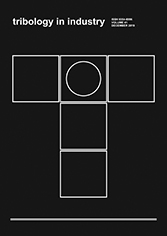Volume 42, No 4, 2020, Pages 679-691
HfN Coating of ASSAB 17 Steel by PVD Method and its Effects on 6063-T5 Aluminum Alloy Turning
Authors:
J. OrtÝz ![]() ,
J. Caicedo
,
J. Caicedo ![]() ,
J. Navarro-Devia
,
J. Navarro-Devia ![]() ,
J. Martinez
,
J. Martinez ![]() ,
W. Aperador
,
W. Aperador ![]()
![]()
Received: 7 July 2020
Revised: 16 August 2020
Accepted: 21 November 2020
Published: 15 December 2020
Abstract:
The industrial tool performance inspires the study of the machining of several materials with low production downtime. Aluminum is well-known for its high strength-to-weight ratio when compare both plastic and raft, thus making it advantageous for aerospace, construction and transport applications. However, aluminum machining damages the cutting tool with diverse wear mechanisms (adhesion, abrasion), thus suggesting a need for a new coating material. Previous studies show a high performance in abrasion resistance of Hafnium nitride [HfN] coated tools in turning of AISI1020 steel. This article evaluates the performance of [HfN] coated and uncoated burins (ASSAB 17) through roughing of Aluminum profiles by temperature sensing at the tool/material interface, workpiece roughness measurement and inspection of the cutting tool wear. Scanning electron microscopy and confocal microscopy were used to identify tool wear. A digital temperature sensing device displaying infrared long-wavelength was designed to examine the temperature due to its correlation on the tool wear. A significant improvement during aluminum roughing was observed with the use of [HfN] coatings, due to increase of the wear resistance of the ASSAB 17 burin, thus improving the surface finish.
Keywords:
Hafnium nitride, Aluminum, Cutting tool, Wear, Coatings





